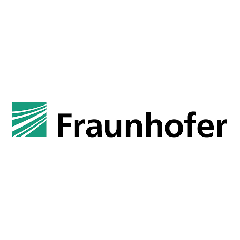The majority of photovoltaic (PV) systems in Germany are roof-mounted using a mounting system to fix the modules. On the other hand, solar PV modules that are fully integrated into the façade or roof offer many advantages to the building owner. Presently a global mass market is developing for photovoltaic building envelopes, allowing cities, in particular, to develop a more sustainable energy consumption. Researchers at the Fraunhofer Institute for Solar Energy Systems ISE have made recommendations as to how European manufacturers can participate more successfully in this market. Key facets are the industrial production of custom-made solar components for buildings as well as the incorporation of these components in the planning tools and processes of building specialists. On March 18-19, 2019, the BIPV Forum is meeting in Bad Staffelstein, directly prior to the PV Symposium held there annually.
About 75 percent of all solar PV systems in Germany are roof-mounted, and 25 percent are installed in open areas. The share of building-integrated solar modules, or BIPV, is still rather small, which is quite astounding. Building-integrated modules not only supply electricity, but also function as noise barrier, insulation and provide protection against wind and weather. Additionally, photovoltaic systems integrated into transparent building areas can provide shade and daylight.
Support for the increased use of solar in the building envelope is provided currently by policy makers. As of 2021, an EU Directive requiring all new buildings to have a nearly zero annual energy balance goes into effect. The German government has set a target to realize a climate-neutral building stock by 2050. Against this backdrop, BIPV could be increasingly implemented by architects and planners, thus promoting large area utilization of PV on buildings with a high user acceptance.
Photovoltaic Building Components: Multiple Advantages for Building Owners
Vertically integrated PV modules make use of the low-lying winter sun particularly well. Depending on the orientation, peak yield for vertical installations does not occur at midday, as for most roof-mounted systems, but rather in the morning or afternoon, This opens up the possibility that a complementary battery system installed to increase self-consumption may be sized smaller. Also, snow cover does not present a yield risk. Not least, aesthetics speak in favor of building-integrated photovoltaics: With photovoltaic modules, it is possible to create partly transparent glazing or translucent elements in different colors.
In particular, cities with a large building stock could benefit greatly from the technology, helping to close the gap between renewable energy use in rural and urban areas. Big buildings are excellently suited for BIPV, since multi-story buildings have large façades among other things. Although building-integrated photovoltaics is more expensive than other types of building envelopes, the additional costs are reduced appreciably if a renovation or new envelope is necessary anyway. A payback time of about ten years for the additional costs is possible in the meanwhile.























